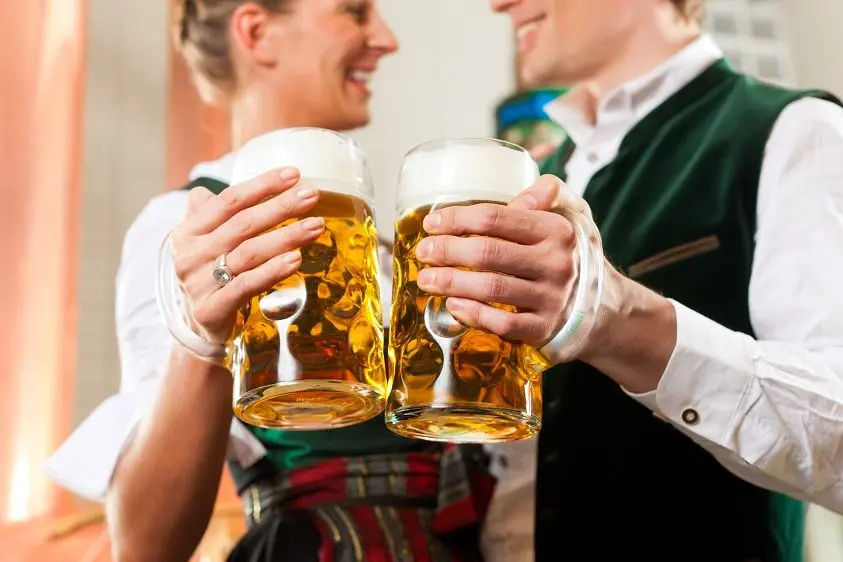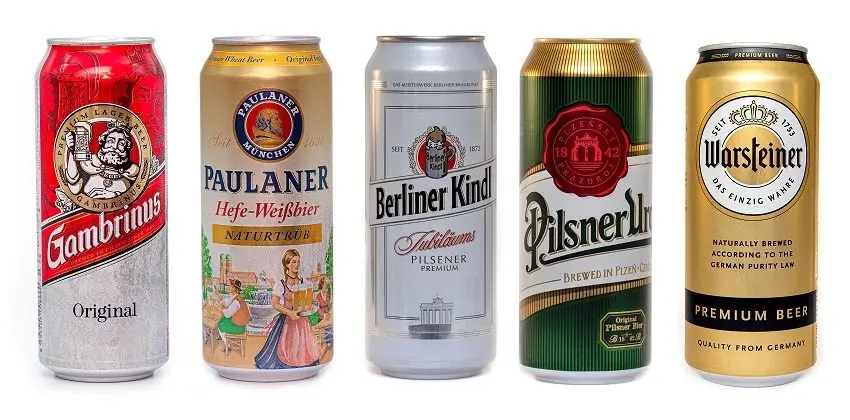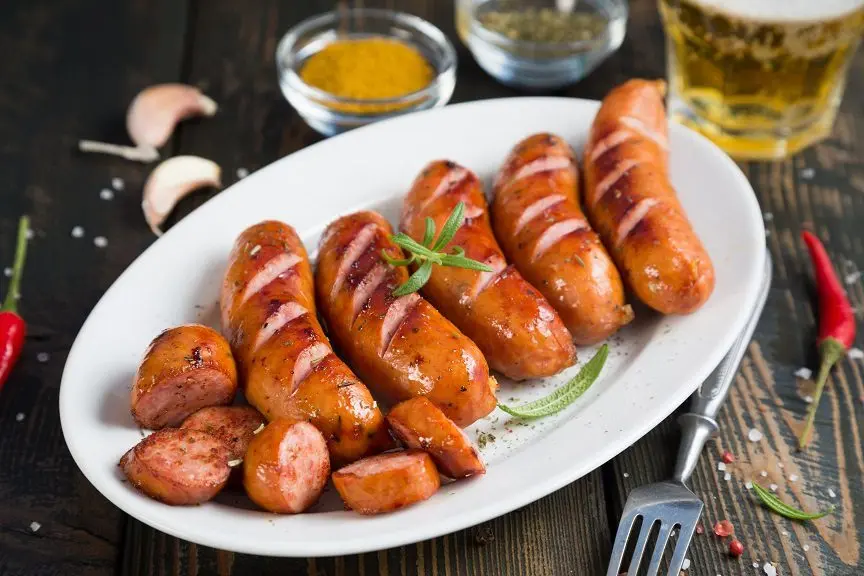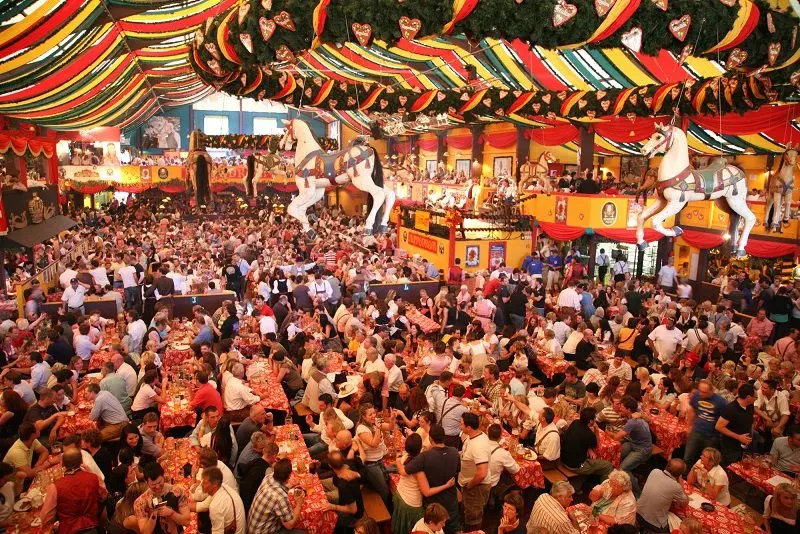Contents
Beer is an integral part of German culture, practically the national drink of Deutschland. German beer is distinguished by a rich variety of flavors and varieties, but at the same time, for the most part, it follows a single standard – the “beer purity decree”, which will be discussed later. According to the consumption of a foamy drink per capita, the Germans are second only to the Czechs and Austrians, but they are far ahead of the representatives of all other countries.
Historical information
The first mention of “barley juice” on the territory of Bavaria dates back to 736, and 30 years later an officially documented beer letter appeared – an agreement on the supply of beer from the city of Geisingen to the monastery of St. Gallen. Originating in southern Germany, the love of intoxicating drink gradually spread throughout the country. With the development of trade, it became necessary to somehow unify production, regulate prices and establish quality standards. In addition, the government sought to reduce the consumption of valuable wheat by forcing brewers to use cheap barley.

The first attempts to legally prohibit the addition of anything to beer and fix a single standard were made as early as 1434 and 1487, and in 1516 the Bavarian Duke Wilhelm IV issued the famous “decree on the purity of beer” (Reinheitsgebot), instructing brewers to limit the list of ingredients exclusively to barley malt, hops, and water. Later, brewer’s yeast was added to this list.
For varieties with top fermentation (fermentation), an exception was made – they may contain sugar, and in 1987 the Germans lowered the requirements for imported brands – provided that all components of the product are honestly indicated on the label. Today, the Reinheitsgebot is integrated into German law and, although slightly modified, is still used today.
Types and varieties of German beer
Wheat beer includes the following types:
- Weissbier – (Weißbier, from the German “weiss” – wheat), fruity notes are felt in the taste, a strength of 5-5,4%.
- Weissbockbier (Weißbockbier – strong wheat beer, reaching 6-10%.
- Rye beer (Roggenbier, rye comes as an additive, and the base is wheat). It has a distinct “bread” flavor, a strength of 4,5-6%.
- Berliner Weisse is a sour and light variety (2,8%), popular in the German capital.
- Leipziger Gose is a sour variety with the addition of salt. Fortress 4-5%.
- Hefeweizen – (from the German “hefe” – yeast) unfiltered wheat beer with a yeast flavor, containing 5-5,5% alcohol.
- Kristallweizen – filtered hefeweizen.
- Kottbusser (Kottbusser) – the original kind of foamy drink containing oats, honey, molasses and popular in the town of Cottbus, a strength of 5-6%.
Light beer:
- Altbier (Altbier) – top-fermented lager, produced in Düsseldorf and the lowlands of the Rhine, the taste varies from bitter-hoppy, frankly rich-bitter, strength – from 5% to 6,5%.
- Export (Export) – not the products of other countries, as one might think, but a lager from Dortmund. In the 1950s and 60s, it was the most popular variety in Germany, but today it is almost never found. The taste is full-bodied, malty, the fortress is about 5%.
- Helles, also known as Munich Pale Lager, is a Bavarian variation of a malt drink with up to 5% ABV.
- Kolsch (Kölsch) – brewed only in Cologne, has a bitter-hop flavor, contains 4,8% alcohol.
- Maibock (Maibock) – “May side”, a strong beer produced exclusively in spring, reaches a strength of 6,5-7%.
- March beer (Märzen) – most often brewed specifically for Oktoberfest, it can be dark and light, contains 5,2-6% alcohol, hops are felt in the taste.
- Pilsener – This variety owns two-thirds of the German market, the beer has been brewed since 1842, has a bitter hop flavor and 4,5-5% ABV.
- Special (Spezial) – a golden-light sweetish lager with a slight bitterness, a fortress of 5,5-5,7%.
Dark beer:
- Bock (Bock) – bittersweet full-bodied strong beer (6-8%).
- Doppelbock is an even stronger variation (7-12%).
- Dunkel (Dunkel, aka Dark Lager). It has a caramel-malt flavor and an alcohol concentration of 4,5% to 6%.
- Schwarzbier (Black beer). Traditional drink of mountain masters, workers. It is famous for chocolate notes and rich black color, while the fortress is quite moderate – 4,5-5%.
Unfiltered beer
Unfiltered lagers are referred to in Germany by the generic term “Kellerbier” (Kellerbier) and can vary greatly in both strength and color.
Zwickelbier is a sort of light sparkling unfiltered beer, rarely exported, therefore it is popular exclusively within the country, the strength of the drink does not exceed 5%. Previously, this was the name of the first portion of unfiltered drink, taken for a sample from the barrel by the owner of the brewery.
Additional views
The following categories of drink are also distinguished:
- Biobier is a beer made exclusively from natural products of organic origin, without any additives.
- Rauchbier is a “smoked” beer from Bamberg with a characteristic smoky flavor and a strength of about 5%.
- Festbier is a beer brewed specifically for festivals.
- Christmas beer (Weihnachtsbier) – usually it is generously flavored with various spices and has a red color, the strength varies from 6% to 7,5%.
Popular brands of German beer
For 2012, the top 10 best-selling brands looked like this:
- Oettinger – the company positions itself as a leader in the cheap segment, specializing in beer “for everyone”.
- Krombacher is a former market leader that lost ground to Oettinger in 2004. This manufacturer produces the most popular Pilsner in Germany.
- Bitburger – despite the third position in the overall ranking, it is considered the “Draft Beer No. 1”.
- Beck’s is a traditional Bremen brand that has been part of the Interbrew concern since 2002.
- Warsteiner – closes the top five is an ancient brand that has existed since 1753.
- Hasseroder is another member of the famous Interbrew concern, leading its history from the end of the XNUMXth century.
- Veltins – the production was founded in 1824 as a small home brewery, today the brand sells almost 3 million hectoliters of products per year.
- Paulaner is a Munich-based brewery, one of the six main beers supplying Oktoberfest beer.
- Radeberger has been in existence since 1872 and specializes exclusively in Pilsners.
- Erdinger is the world’s largest manufacturer of wheat varieties.

How to drink german beer
Wheat beer is drunk from slender glasses with a volume of 500 ml, narrow at the bottom and widening at the top. Other varieties are drunk from squat “steine” mugs, and in particularly sophisticated bars, each variety is poured into its own special type of glass. A foamy drink should be stored at a temperature not exceeding 10 degrees, beer sommeliers do not recommend mixing beer with other types of alcohol so as not to “lose your head” and fully enjoy the taste.

The Germans eat their national drink with salted nuts, cold cuts, smoked sausages, pickled cucumbers, fried pork – in general, fatty and hearty snacks are preferred here.
beer festivals
Malt and hop connoisseurs from all over the world come to German beer festivals.
The most famous event is, of course, the Bavarian Oktoberfest, which lasts from two to three weeks in late September – early October. The Folkfest and Spring Festival in Stuttgart, Starkbirzeit (strong beer festival) in Munich, Bergkirchweich in Erlagen and other folk festivals are also quite popular.










